IntMath Newsletter: Log graphs, challenges, news
By Murray Bourne, 29 May 2019
29 May 2019
In this Newsletter:
1. New on IntMath: Logarithm function from its graph
2. Breakthrough Junior Challenge
3. Resources: Wolfram, MathGraph32
4. Math in the news: Computers and equations
5. Math movies: Calculus, Probability
6. Math puzzle: Bowling
7. Final thought: extinctions
1. New on IntMath: Finding the logarithm function from its graph
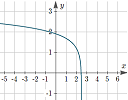 |
This article explains how to observe the characteristics of a logarithmic graph to determine its equation. See: How to find the equation of a logarithm function from its graph? |
2. Breakthrough Junior Challenge
One of the best ways to learn something is to explain it to someone else.
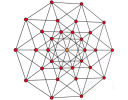 |
The Breakthrough Junior Challenge encourages students to create a short explanatory video. Prizes include a $250,000 post-secondary/college scholarship. |
The overall idea, from the site:
Explain a big scientific idea in Physics, Life Sciences or Mathematics with a short video. You will have until June 15, 2019 at 11:59 PM PDT to submit your video (3:00 minutes max).
See these previous prize-winning videos made by students.
The number of submissions for math topics is quite low compared to the other categories. So, give it a go!
3. Resources
(a) Wolfram Language Webinars
 |
Wolfram has released a new version of the Wolfram Language and Mathematica, and is offering 4 free Webinars to explain the new features. |
I'm particularly looking forward to the June 12 one, which will cover:
Mathematics and Scientific Visualization
Calculus • Algebra • Complex Visualization • Geographic Visualization • Molecular Visualization
You can register here.
Of course, their main aim is commercial, but you can still learn a lot of worthwhile things by seeing how the experts make use of a powerful mathemtaical tool.
You may also be interested in Wolfram U, a series of videos which explores a range of math topics using Mathematica.
(b) MathGraph 32 - updated to javascript
I've featured MathGraph32 a few times before on IntMath. It's a cross-platform, cross-browser interactive graphing solution, with some very nice features. It's similar in many ways to GeoGebra, but I find it easier to use for many cases.
From the developer, Yves Biton:
MathGraph32 can be used:
- Online (with easy to use menu icons); or
- As a stand alone application (download page)
It also works on mobile devices.
Check out these tutorial videos in English, and here are some graph interactives.
4. Math in the news:
(a) Using computers to crack open centuries-old mathematical puzzles
Throughout history, a lot of mathematical research ended up in the "too hard" basket, because it was just impossible to do all the calculations necessary to draw a conclusion.
One such example is that of Diophantine Equations, the most famous of which was xn + yn = zn, which has no whole number solutions when n is greater than 2, finally proved by Andrew Wiles after 300 years.
The article Using computers to crack open centuries-old mathematical puzzles by Christopher Rasmussen, Associate Professor of Mathematics at Wesleyan University, explains in layman's language what the researchers aimed to do by using computers.
The actual paper talks about how they used Sagemath, an open-source computer algebra system, to solve cubic Ramanujan-Nagell equations, for example:
x3 + 3k = qn, where q is an odd prime.
One such solution is x = 2, k = 4, q = 89 and n = 1, giving:
23 + 34 = 891
(b) New memristor circuit solves linear equations in nanoseconds
An example of a simple linear equation written in matrix form is:
![]()
(See Matrices and Linear Equations for background.)
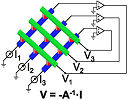 |
A new circuit can solve large cases of such a system of linear equations in a single operation within a few tens of nanoseconds, much faster than using current or quantum methods. |
It uses an analog method of in-memory computing, where one equation coefficient is stored as a unique resistance in one memristor (an electrical component that regulates the flow of current in a circuit and remembers the amount of charge that has previously flowed through it, retaining this memory even without power.)
The circuit was tested on a wide set of algebraic problems including:
- Ranking of internet websites
- Complex differential equations
- Finding wave-function of an electron
See: Speeding up artificial intelligence
5. Math Movies
(a) Essence of Calculus - 3Blue1Brown
I've featured 3Blue1Brown's brilliant videos in earlier Newsletters. This time it's the series, Essence of Calculus.
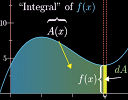 |
If you are about to embark on studying calculus, this would be a great introduction: |
(b) False positive riddle
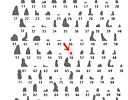 |
Mining unobtainium is hard work – the rare mineral appears in only 1% of rocks in the mine. But your friend Tricky Joe has something up his sleeve (involving conditional probability). |
6. Math puzzles
The puzzle in the last IntMath Newsletter asked about a general formula for a given sequence. There were an interesting range of responses.
Correct answers with sufficient reasons were submitted by Michael (who used modulus arithmetic) and Russell. Correct solutions (but with missing reasoning or details) were presented by: Gayathri, Christopher, Larry, Arun, and Nicola (who used a recursive approach).
New math puzzle: Bowling
In his latest bowling game, Raj scored 199 and this raised his average over a number of games from 177 to 178. What must he score in the next game to raise his average to 179?
You can leave your response here. Hint: If you present your answer with full explanation of how you obtained it, then others can follow your thinking and learn something from it.
7. Final thought - extinctions
Some years ago I was on a retreat in Malaysia. I enjoy going for walks in the early morning, and one day I followed a track into the (secondary) jungle. I was quite surprised to come across recent evidence (just hours old) of elephants using the same track. It could have been dangerous had I met those elephants, but I was excited to know wild elephants were still in the area. (Most of the virgin jungle in that area has been cleared for palm oil production, so it was doubly surprising.)
So I was saddened by the death this week of the last captive male Sumatran rhino in Malaysia, the last in a country that used to have plenty of them.
There is a real insanity of animal destruction going on in order to feed the irrational ivory, rhino horn, pangolin scale and shark fin markets.
Those who buy these products will need to consume fingernails when the animals are all gone. It will have the same effect on their libido and health.
Until next time, enjoy whatever you learn.
See the 11 Comments below.
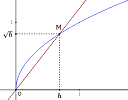
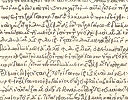
29 May 2019 at 4:17 pm [Comment permalink]
x/n = 177
x = 177n
(x + 199)/(n + 1) = 178
(177n+ 199)/(n + 1) = 178
177n + 199 = 178n + 178
n = 21
x = 177 * 21
x = 3717
(x + 199 + a)/(n + 2) = 179
3717 + 199 + a = 179 * 23
3916 + a = 4117
a = 201
Final answer: a = 201
30 May 2019 at 12:07 am [Comment permalink]
Let N be the number of games played for which Raj averaged 177.
Let X be the required score to bump the average to 179.
For N games, averaging 177 is equivalent to averaging N games at score 177.
Average at N games:
N*177/N = 177
At game N+1, Raj averaged 178 after scoring 199. Average at game N+1:
(N*177 + 199)/(N+1) = 178 --> N=21
At game N+2, Raj averages 179.
(N*177 + 199 + X)/(N+2) = 179 --> X=201
Since max bowling score is 300, this is possible, and Raj scored 201 on his 23rd game.
30 May 2019 at 1:12 am [Comment permalink]
Let x = first no of games. 177 = average. 177x = total score.
Then x +1 = 2nd no of games. 178 = average. 178x + 178 = total score.
Difference = 178x + 178 - 177x = 199. Therefore first no of games = x + 178 = 199. x = 21.
First games. 21 × 177 = total score of 3717.
Second games. 22 × 178 = total score of 3916 = A.
Third games. 23 × 179 = total score of 4117 = B.
Must score B - A in third game = 201.
30 May 2019 at 1:32 am [Comment permalink]
Hello, Murray,
A typo: "proved by Eric Wiles after 300 years". I'm sure you meant Andrew Wiles!
30 May 2019 at 1:34 pm [Comment permalink]
Hello Murray, your last item on extinctions....I bought a book in 2004 "Extinctions: Evolution and the End of Man" published in 2003 written by ( Professor) Michael Boulter. Recommend it ...he discusses the last big 5 extinctions, forecasts the 6th big extinction and the eventual demise of the human race as we know it. Full of interesting ideas and charts. A short concise scientific book which any large second hand bookshop will have. WORLD OF BOOKS on the web have one. Kind regards,
Roger.
30 May 2019 at 1:50 pm [Comment permalink]
@Roger: Thanks for the recommendation. I've asked my local library to order it 🙂
30 May 2019 at 1:52 pm [Comment permalink]
@Tomas: Oops - I've fixed the typo. Apparently there are those who question Wiles' proof now - I didn't want to get into that in this already fairly long Newsletter!
31 May 2019 at 4:16 am [Comment permalink]
Let n = number of games so far.
The total is then 177 n
The total for (n + 1) games = 178(n + 1)
Then 178(n + 1) = 177n + 199
Solve and get n = 21
The total for 22 games is 178 x 22 = 3916
Let the total for n+2 games = 3916 + g
The total for 23 games is 179 x 23 = 4117
Then 3916 + g = 4117
Then g = 201
2 Jun 2019 at 5:08 pm [Comment permalink]
I assume we are talking about arithmetic average.
Let's call a generic ith score as xi.
The first average is \ 177=(sum xi(i from 1 to N))/N \ and also \ 177*N=sum xi(i from 1 to N) \
The second average after the 199 score would be \ 178=(sum xi (i from 1 to N+1)/(N+1) \
The last formula can also be written as \ 178=(sum xi (i from 1 to N) + xn+1)/(N+1) \ and substituting \ xn+1=199 \, we get \ 178=(sum xi (i from 1 to N)+199)/(N+1) \
We can now substitute the sum from the first average equation into the last equation \ 178=(177*N+199)/(N+1) \
A little algebra gives us N=21 and N+1=22.
Now the equation we want to solve is \ ((N+1)*178+x)/23=179 \
or \ (22*178+x)/23=179 \ which is an easy one to solve and gives x=201.
5 Jun 2019 at 4:25 pm [Comment permalink]
Solution to puzzle.
Let Raj's score after n games = S. After n games his average is 177. Hence S/n = 177 (equation 1)
In the next game he scores 199 and his average becomes 178, so (S+199)/(n+1) = 178 (equation 2)
We can solve eqn's 1 & 2 simultaneously to fins S and n: rearranging we have S=177n and S+199=178(n+1). Hence 177n+199=178(n+1), so 177n+199=178n+178, giving n=21.
So S=177x21=3717.
Check: after 22 games, average score = (3717+199)/22 = 3916/22 = 178 as required.
Let x = Raj's score on his 23rd game. His average after 23 games will be (3916+x)/23 = 179.
3916+x = 23x179 = 4117
x = 4117-3916 = 201.
So Raj must score 201 in his next game.
6 Jun 2019 at 3:02 pm [Comment permalink]
Sn is the starting total, n is the number of games played so far
Sn/n = 177 Sn+1/(n+1) = 178 Sn+1 = Sn + 199 Sn = 177n
177n + 199 = 178(n+1)
177n + 199 = 178n + 178 so n=21 Sn = 3717 Sn+1 = 3916
Check 3916/22 = 178
Sn+2 = Sn+1 + x Sn+2/23 = 179 (3916 + x)/23 = 179
x = 23 * 179 - 3916 = 201
Check 4117/23 = 179